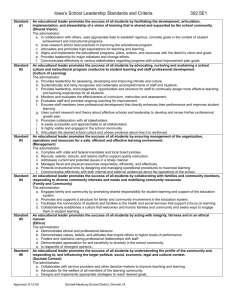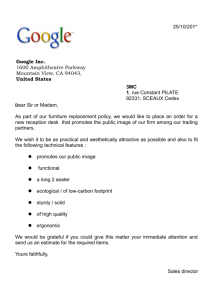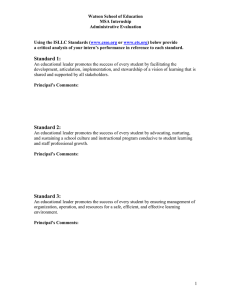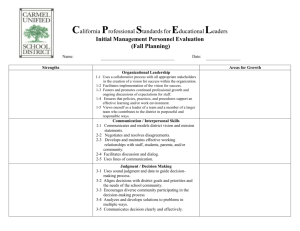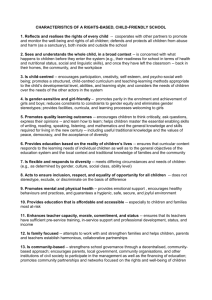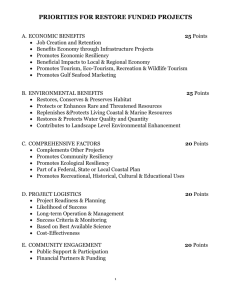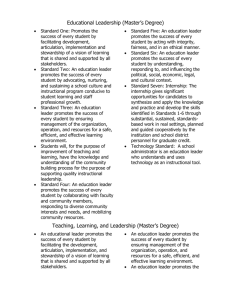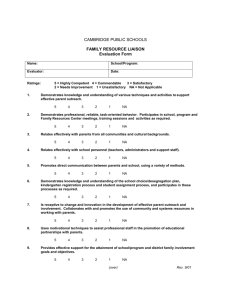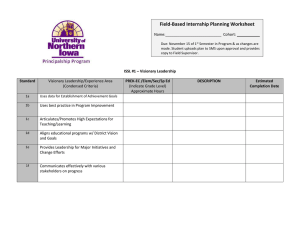ISSL Standards Self-Assessment
advertisement
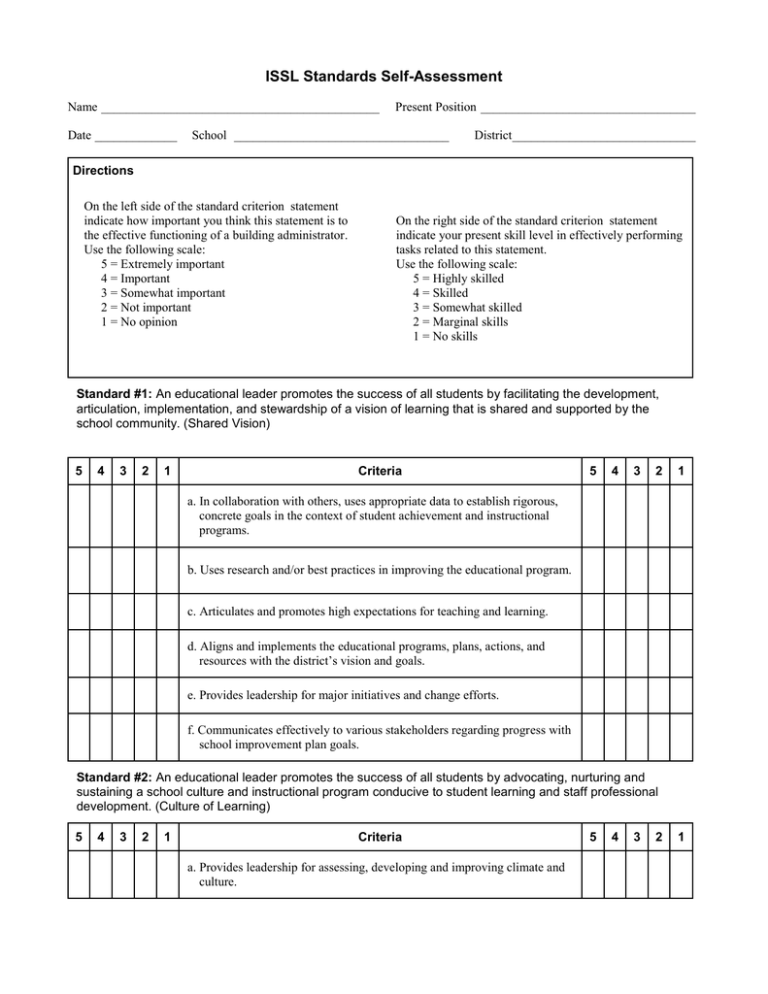
ISSL Standards Self-Assessment Name ____________________________________________ Date _____________ Present Position __________________________________ School __________________________________ District _____________________________ Directions On the left side of the standard criterion statement indicate how important you think this statement is to the effective functioning of a building administrator. Use the following scale: 5 = Extremely important 4 = Important 3 = Somewhat important 2 = Not important 1 = No opinion On the right side of the standard criterion statement indicate your present skill level in effectively performing tasks related to this statement. Use the following scale: 5 = Highly skilled 4 = Skilled 3 = Somewhat skilled 2 = Marginal skills 1 = No skills Standard #1: An educational leader promotes the success of all students by facilitating the development, articulation, implementation, and stewardship of a vision of learning that is shared and supported by the school community. (Shared Vision) 5 4 3 2 1 Criteria 5 4 3 2 1 a. In collaboration with others, uses appropriate data to establish rigorous, concrete goals in the context of student achievement and instructional programs. b. Uses research and/or best practices in improving the educational program. c. Articulates and promotes high expectations for teaching and learning. d. Aligns and implements the educational programs, plans, actions, and resources with the district’s vision and goals. e. Provides leadership for major initiatives and change efforts. f. Communicates effectively to various stakeholders regarding progress with school improvement plan goals. Standard #2: An educational leader promotes the success of all students by advocating, nurturing and sustaining a school culture and instructional program conducive to student learning and staff professional development. (Culture of Learning) 5 4 3 2 1 Criteria a. Provides leadership for assessing, developing and improving climate and culture. 5 4 3 2 1 ISSL Standards Self-Assessment 2 b. Systematically and fairly recognizes and celebrates accomplishments of staff and students. c. Provides leadership, encouragement, opportunities and structure for staff to continually design more effective teaching and learning experiences for all students. d. Monitors and evaluates the effectiveness of curriculum, instruction and assessment. e. Evaluates staff and provides ongoing coaching for improvement. f. Ensures staff members have professional development that directly enhances their performance and improves student learning. g. Uses current research and theory about effective schools and leadership to develop and revise his/her professional growth plan. h. Promotes collaboration with all stakeholders. i. Is easily accessible and approachable to all stakeholders. j. Is highly visible and engaged in the school community. k. Articulates the desired school culture and shows evidence about how it is reinforced. Standard #3: An educational leader promotes the success of all students by ensuring management of the organization, operations and resources for a safe, efficient and effective learning environment. (Management) 5 4 3 2 1 Criteria 5 4 3 2 a. Complies with state and federal mandates and local board policies. b. Recruits, selects, inducts, and retains staff to support quality instruction. c. Addresses current and potential issues in a timely manner. d. Manages fiscal and physical resources responsibly, efficiently, and effectively. e. Protects instructional time by designing and managing operational procedures to maximize learning. f. Communicates effectively with both internal and external audiences about the operations of the school. Standard #4: An educational leader promotes the success of all students by collaborating with families and community members, responding to diverse community interests and needs and mobilizing community resources. (Family and Community) 1 ISSL Standards Self-Assessment 5 4 3 2 1 Criteria 5 4 3 2 3 1 a. Engages family and community by promoting shared responsibility for student learning and support of the education system. b. Promotes and supports a structure for family and community involvement in the education system. c. Facilitates the connections of students and families to the health and social services that support a focus on learning. d. Collaboratively establishes a culture that welcomes and honors families and community and seeks ways to engage them in student learning. Standard #5: An educational leader promotes the success of all students by acting with integrity, fairness and in an ethical manner. (Ethics) 5 4 3 2 1 Criteria 5 4 3 2 1 a. Demonstrates ethical and professional behavior. b. Demonstrates values, beliefs, and attitudes that inspire others to higher levels of performance. c. Fosters and maintains caring professional relationships with staff. d. Demonstrates appreciation for and sensitivity to diversity in the school community. e. Is respectful of divergent opinions. Standard #6: An educational leader promotes the success of all students by understanding the profile of the community and responding to, and influencing the larger political, social, economic, legal and cultural context. (Societal Context) 5 4 3 2 1 Knowledge/Disposition/Performance a. Collaborates with service providers and other decision-makers to improve teaching and learning. b. Advocates for the welfare of all members of the learning community. c. Designs and implements appropriate strategies to reach desired goals. 5 4 3 2 1
